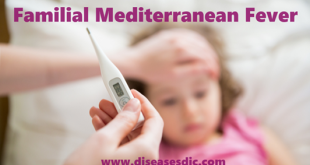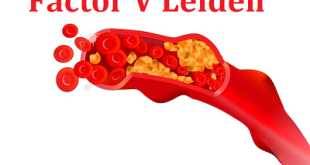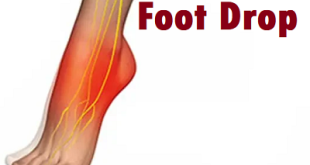Definition
Fibrocystic breasts are characterized by lumpiness and usually discomfort in one or both breasts. The lumpiness is due to small breast masses or breast cysts. The condition is very common and benign, meaning that fibrocystic breasts are not malignant (cancerous). Fibrocystic breast disease (FBD) is now referred to as fibrocystic changes or fibrocystic breast condition, is the most common cause of “lumpy breasts” and affects more than 60% of women. The condition primarily affects women between the ages of 30 and 50, and tends to resolve after menopause.
Epidemiology
It is difficult to determine the exact incidence of this condition, given that there is no clear definition or diagnostic criteria and that it is often a diagnosis of exclusion. The estimated incidence rate of fibrocystic changes increases with age, from 137 per 100,000 woman-years at ages 25 to 29 years, to 411 per 100,000 woman-years at ages 40 to 44 years, and to 387 per 100,000 woman-years at ages 45 to 49 years, and then decreases. The peak incidence of symptoms occurs in women in the third and fourth decades of life, when the degree of diffuse palpable nodularity in the breast may increase. There is a higher prevalence of cysts as women approach menopause. Histologic evidence from autopsy studies finds fibrocystic changes in 54% of clinically normal breasts.
Types of fibrocystic breast disease
When biopsies (samples) of breast tissue are studied under the microscope, it is possible to identify different types of fibrocystic breast condition. Some cases of fibrocystic breast condition show little disturbance of the breast tissue. Other cases involve a large number of cysts, along with fibrous (scar) tissue, in the breast tissue. Additionally, in some cases of fibrocystic breast condition, the breast cells do not have a normal appearance.
Cysts and fibrosis
Usually, even when the breast is not stimulated to produce milk, some secretions are produced by the secretory glandular cells. These secretions are normally reabsorbed “downstream” in the ducts. However, when there has been tissue damage and scarring (fibrosis) in the breast, these secretions may be trapped in the glandular portions of the breasts, thereby leading to the formation of fluid-filled sacs called cysts. In some areas of the breasts, there may be excessive fluid secretions due to stimulation by hormone-like substances. The resulting cysts may remain microscopic or enlarge until they contain several teaspoons or even tablespoons of fluid. These larger cysts may be felt as palpable (capable of being detected by touching) breast lumps. Even microscopic cysts may sometimes be felt as palpable lumps if many cysts are clustered together and there is a buildup of fibrous (scar) tissue around the cysts.
Hyperplasia and atypical hyperplasia of breast cells
With repeated stimulation from normal hormones, and possibly the effects of many of the hormone-like substances produced in the breast, a few of the epithelial cells (cells that line the ducts in the breast) may eventually lose some of their genetic controls, which normally limit their multiplication (cell division). When this happens, cells may proliferate, leading to an abnormal architectural pattern of the epithelial cells. This over-proliferation of cells is termed hyperplasia. Sometimes these proliferating cells begin to appear abnormal and to look different from one another. They are now described as “atypical.” As other more normal cells continue to cycle, die and break down, these atypical cells can move in, spread out, and accumulate. This extensive overgrowth and accumulation of atypical cells is called atypical hyperplasia.
Causes
The exact cause of fibrocystic breast changes isn’t known, but experts suspect that reproductive hormones especially estrogen play a role.
Fluctuating hormone levels during your menstrual cycle can cause breast discomfort and areas of lumpy breast tissue that feel tender, sore and swollen. Fibrocystic breast changes tend to be more bothersome before your menstrual period, and the pain and lumpiness tends to clear up or lessen once your menstrual period begins.
When examined under a microscope, fibrocystic breast tissue includes distinct components such as:
- Fluid-filled round or oval sacs (cysts)
- A prominence of scar-like fibrous tissue (fibrosis)
- Overgrowth of cells (hyperplasia) lining the milk ducts or milk-producing tissues (lobules) of the breast
- Enlarged breast lobules (adenosis)
Symptoms of fibrocystic breast disease
Signs and symptoms of fibrocystic breasts may include
- Breast lumps or areas of thickening that tend to blend into the surrounding breast tissue
- Generalized breast pain or tenderness
- Breast lumps that fluctuate in size with the menstrual cycle
- Green or dark brown non bloody nipple discharge that tends to leak without pressure or squeezing
- Breast changes that are similar in both breasts
- Monthly increase in breast pain or lumpiness from mid cycle (ovulation) to just before your period
- Fibrocystic breast changes occur most often in women in their 20s to 50s. Rarely do postmenopausal women experience fibrocystic breast changes, unless they’re on hormone therapy.
Symptoms of fibrocystic breast
Complications of fibrocystic breast disease
It is normally not associated with breast cancer until and unless the changes in your breasts are linked with atypical hyperplasia which is itself characterized by the abnormal growth of cells lining the ducts and breast lobules.
Diagnosis and test
Tests to evaluate your condition may include:
Clinical breast exam: Your doctor checks for unusual areas by visually and manually examining your breasts and the lymph nodes located in your lower neck and underarm area. If your medical history and the clinical breast exam indicate normal breast changes, you may not need additional tests. If your doctor finds a new lump and suspects fibrocystic changes, you may come back a few weeks later, after your menstrual period, to have another breast exam. If the changes persist, you’ll likely need a mammogram or ultrasound.
Mammogram: If your doctor detects a breast lump or prominent thickening in your breast tissue, you need a diagnostic mammogram an X-ray exam that focuses on a specific area of concern in your breast. The radiologist closely examines the area of concern when interpreting the mammogram.
Ultrasound: An ultrasound uses sound waves to produce images of your breasts and is often performed along with a mammogram. If you’re younger than age 30, you might have an ultrasound instead of a mammogram. Ultrasound is better for evaluating a younger woman’s dense breast tissue tissue tightly packed with lobules, ducts and connective tissue (stroma). Ultrasound can also help your doctor distinguish between fluid-filled cysts and solid masses.
Fine-needle aspiration: For a breast lump that feels a lot like a cyst, your doctor may try fine-needle aspiration to see if fluid can be withdrawn from the lump. This helpful procedure can be done in the office. A fine-needle aspiration may collapse the cyst and resolve discomfort.
Breast biopsy: If a diagnostic mammogram and ultrasound are normal, but your doctor still has concerns about a breast lump, you may be referred to a breast surgeon to determine whether you need a surgical breast biopsy. A breast biopsy is a procedure to remove a small sample of breast tissue for microscopic analysis. If a suspicious area is detected during an imaging exam, your radiologist may recommend an ultrasound-guided breast biopsy or a sterotactic biopsy, which uses mammography to pinpoint the exact location for the biopsy.
Treatment and medications
If you don’t experience symptoms, or your symptoms are mild, no treatment is needed for fibrocystic breasts. Severe pain or large, painful cysts associated with fibrocystic breasts may warrant treatment.
Treatment options for breast cysts include:
Fine-needle aspiration: Your doctor uses a hair-thin needle to drain the fluid from the cyst. Removing fluid confirms that the lump is a breast cyst and, in effect, collapses it, relieving associated discomfort.
Surgical excision: Rarely, surgery may be needed to remove a persistent cyst-like lump that doesn’t resolve after repeated aspiration and careful monitoring or has features that concern your doctor during a clinical exam.
Examples of treatment options for breast pain include:
- Over-the-counter pain relievers, such as acetaminophen (Tylenol, others) or nonsteroidal anti-inflammatory drugs (NSAIDs), such as ibuprofen (Advil, Motrin IB, others) or prescription medication.
- Oral contraceptives, which lower the levels of cycle-related hormones linked to fibrocystic breast changes.
Alternative medicine
Vitamins and dietary supplements may lessen breast pain symptoms and severity for some women. Ask your doctor if one of these might help you — and ask about doses and any possible side effects:
Evening primrose oil: This supplement may change the balance of fatty acids in your cells, which may reduce breast pain.
Vitamin E: Early studies showed a possible beneficial effect of vitamin E on breast pain in premenstrual women who experience breast pain that fluctuates during the menstrual cycle. In one study, 200 international units (IU) of vitamin E taken twice daily for two months improved symptoms in women with cyclic breast pain. There was no additional benefit after four months.
For adults older than 18 years, pregnant women and breast-feeding women, the maximum dose of vitamin E is 1,000 milligrams daily (or 1,500 IU).
Prevention of fibrocystic breast disease
Tips for preventing and treating fibrocystic breast disease
Increased consumption of complex carbohydrates and fiber to reduce the risk of cystic breasts
Fibrocystic breast disease has been linked to constipation and to diets low in fiber. Having less than three bowel movements per week puts women more at risk of having cystic breasts. Regular bowel movements help the body eliminate toxins and hormones more efficiently. Diets high in vegetables, which provide complex carbohydrates and fiber, help to increase the frequency of bowel movements and provide essential vitamins and nutrients.
Reduced consumption of methylxanthines may reduce the production of breast cysts
Methylxanthines are a component of coffee, chocolate, black tea, and cola drinks. Some women’s breast tissue seems to produce cysts as a result of caffeine intake. In one scientific study, 97% of women who completely avoided methylxanthines showed reduction in size and sensitivity of breast cysts. Results were seen after 4 months of avoiding caffeine and were most significant in severe cases of FBD.
Checking thyroid levels and taking iodine could reduce the risk of fibrocystic breast disease
Iodine is an important mineral necessary for healthy thyroid function. Iodine may also decrease breast tissue sensitivity to estrogen. Rats fed a very low iodine diet show changes in their breast tissue similar to those caused by FBD. Clinically, patients who are treated for low thyroid hormone have decreased breast pain and breast nodules. This suggests that low thyroid hormone or iodine deficiency may be a factor in fibrocystic breast disease.
Consider taking vitamin E, evening primrose oil and B vitamins to normalize hormone levels
Taking supplements may help the body process hormones more effectively and increase progesterone production to balance excess estrogen. Vitamin E may relieve FBD and PMS symptoms by normalizing circulating hormone levels in the body. Evening primrose oil supports progesterone production in the body. B vitamins improve liver function, which is where estrogen is processed and eliminated from the body.
Controlling estrogen is key
These recommendations may work primarily by helping the body to process and excrete estrogen more effectively. Balancing hormone levels can decrease the size, number, and sensitivity of cysts in a woman’s breasts, as well as reduce the risk of breast cancer and decrease PMS symptoms. For more information or a more personalized treatment plan, consult your naturopathic doctor.
 Diseases Treatments Dictionary This is complete solution to read all diseases treatments Which covers Prevention, Causes, Symptoms, Medical Terms, Drugs, Prescription, Natural Remedies with cures and Treatments. Most of the common diseases were listed in names, split with categories.
Diseases Treatments Dictionary This is complete solution to read all diseases treatments Which covers Prevention, Causes, Symptoms, Medical Terms, Drugs, Prescription, Natural Remedies with cures and Treatments. Most of the common diseases were listed in names, split with categories.








I a man above 50yrs.One of my breast is paining me. What the cause? What medicine can I use?
Please consult a doctor as soon as possible.
plz suggested me ,how would I take precautions for my breast nib, besides pimples are very painful , Kindly tell me plz , becouse I have very shy ,
please consult a doctor to get rid of this problem.
Thank you. I will try all your prescriptions..
my wife breast is drippin water would like to know if its bad.
please consult a doctor.
l hv seen doctors,run test and scan yet the nipple pain persists.is worst when I take cold water or bath,pls what else can I do.
It might be due to
Friction from poorly-fitted clothing
Your body’s hormonal changes
Engaging in sexual activity
An allergic reaction to some chemicals
For mothers who’ve just given birth, breastfeeding
Paget’s Disease
Please consult a doctor to get rid of this problem.
i have a lumptious breast according to the scan i did last year but this past few days, i feel my breast is heavy and painful at times.. the upper part nd side of my breast are sometimes painful…
please what can i do or what could be the cause??
please consult a doctor to diagnose the problem.
Sometimes, it’s not possible to identify the exact cause of breast pain. Contributing factors may include one or more of the following:
Reproductive hormones.
Breast structure
Fatty acid imbalance
Medication use
Breast size
Breast surgery